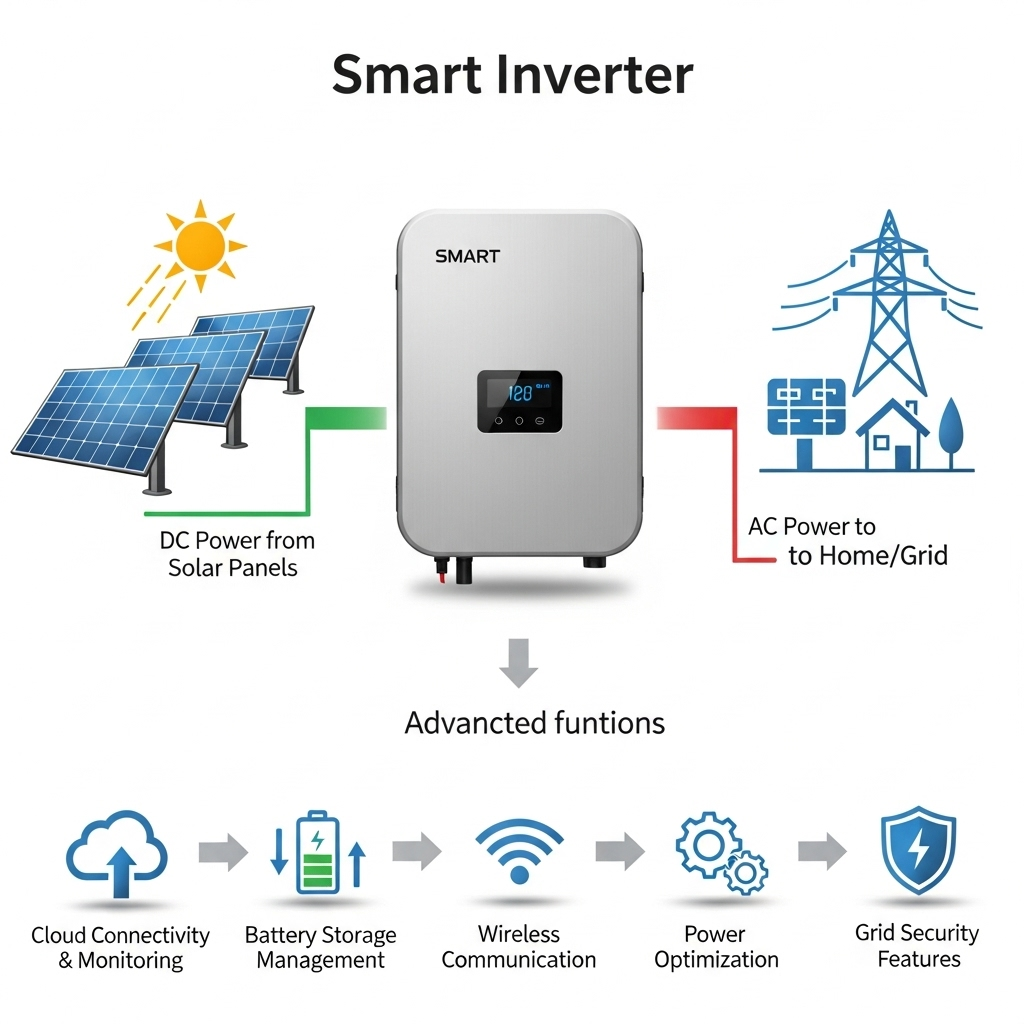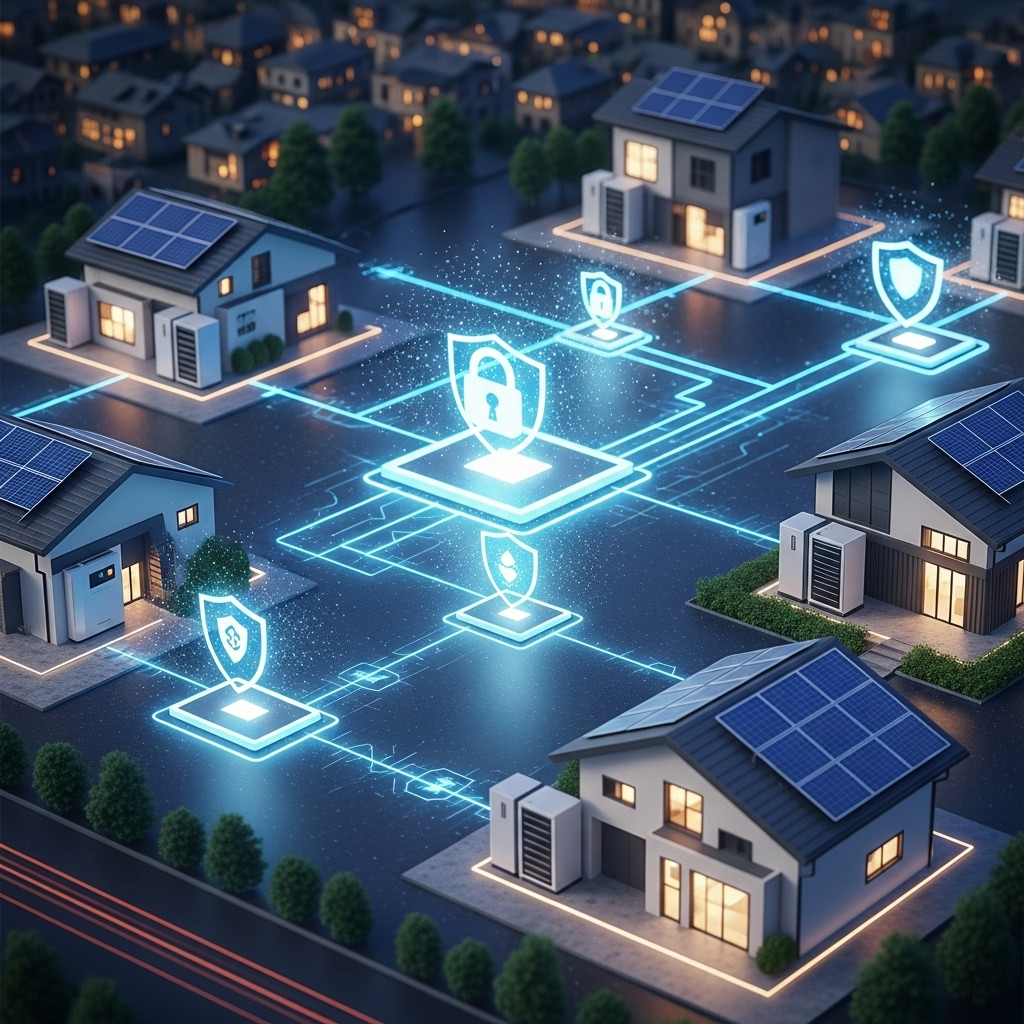Hybrid solar PV and battery storage systems represent a significant step toward energy independence. They empower you to generate, store, and use your own clean electricity. A key financial component that makes these systems attractive is net metering. This policy allows you to send excess solar power to the grid for credits on your utility bill. However, connecting a hybrid system is more complex than a simple solar setup. Many homeowners encounter unexpected hurdles that can reduce savings and cause frustrating delays. Understanding these challenges is the first step to a smooth and profitable interconnection.
1. Navigating Outdated Grid Interconnection Rules
Many of the rules governing how you connect to the grid were established when only solar panels were common. The introduction of energy storage creates new scenarios that old regulations did not anticipate.
The Problem of Missing Terminology
A primary issue is that many utility regulations lack specific language for energy storage. Terms like 'hybrid inverter,' 'battery operating modes,' or 'non-exporting systems' may not exist in their official documents. This ambiguity can lead to confusion and significant delays. Utility engineers may be unsure how to evaluate your application, forcing a lengthy manual review process. A report on improving solar and storage interconnection by the U.S. Department of Energy highlights that updating state rules with proper terminology is a critical step to reducing costs and project timelines.
The 'Solar-Only' Screening Process
Interconnection screening processes are typically designed for solar-only systems. They assume that all generated power will be exported to the grid immediately if not used. This fails to recognize the main advantage of a battery: control. A battery allows you to store solar energy and decide when, or if, to send it to the grid. An outdated screening process might incorrectly flag your system for a detailed and expensive impact study, assuming a worst-case export scenario that your system is programmed to avoid.
2. The Challenge of Accurate Metering
Properly measuring the flow of electricity is central to net metering. With a battery in the mix, what seems simple can become quite complicated, potentially leading to billing errors.
Distinguishing Stored Grid Power from Solar Power
A standard net meter measures the net amount of electricity flowing in and out of your home. It cannot tell the difference between electricity generated by your solar panels and electricity drawn from the grid, stored in your battery, and then sent back to the grid. This is a major concern for utilities. They do not want to credit you for selling grid-purchased electricity back to them, a practice known as energy arbitrage. This complexity is why the concept of 'net demand'—the total demand for power minus renewable energy output—is so important, as noted in publications from the International Energy Agency (IEA).
Complexities with Time-of-Use (TOU) Rates
Time-of-Use rates create a financial incentive to charge your battery with cheap, off-peak grid power and use it during expensive peak hours. Some may also consider exporting this stored energy for a higher credit. However, most net metering policies are designed to credit you only for solar generation. Attempting to export grid-charged battery power can violate your interconnection agreement and may not be tracked correctly by the utility's metering equipment, resulting in billing disputes.
3. Misinterpreting System Operation and Control
A hybrid system's flexibility is its greatest strength, but it can also be a source of misunderstanding with your utility provider. Utilities need assurance that your system will operate predictably and safely.
The Black Box of Operating Schedules
Modern hybrid inverters can be programmed with sophisticated operating schedules. For example, you can set your system to 'maximize self-consumption,' where stored solar power is used in the home first before any is exported. Or, you could have a 'zero-export' profile. Without a standardized way to define and verify these schedules, utilities may treat the system as an unpredictable 'black box.' This lack of trust often results in conservative, worst-case assessments that can stall a project.
Impact on Grid Stability Studies
During the interconnection process, a utility may conduct a study to see how your system will affect the local grid. If they do not account for your programmed operating schedule, they might assume your system will export its maximum possible power (e.g., full solar output plus maximum battery discharge) at all times. This faulty assumption can trigger requirements for costly grid upgrades that are entirely unnecessary for your system's actual, controlled operation.
4. Sizing and Configuration Mismatches
The design and configuration of your system's hardware and software are critical. A mismatch between your system's capabilities and your utility's rules can lead to compliance failures.
Overlooking Export Limitations
Some areas have 'zero-export' or 'limited-export' regulations. These require your system to be configured to prevent or cap the amount of power sent to the grid. This is often managed through inverter settings or an external power meter. If your installer fails to configure these settings correctly, your system could inadvertently export power, putting you in violation of your agreement and at risk of disconnection.
Balancing Performance and Compliance
Achieving peak system performance involves more than just installing panels and a battery. It requires careful calibration of charge and discharge cycles with your home's energy usage. As detailed in a guide on optimizing solar and storage performance, parameters like Depth of Discharge (DoD), round-trip efficiency, and inverter settings directly impact your financial returns. An improperly configured system not only reduces your savings but can also lead to grid interactions that violate local rules, creating a compliance headache.
5. The Financial and Regulatory Maze
Beyond the technical aspects, the financial and regulatory landscape for hybrid systems is constantly shifting. What seems like a good investment today could be affected by future policy changes.
Hidden Costs in Interconnection Studies
As mentioned, an interconnection study based on incorrect assumptions can be a major pitfall. You could be faced with a bill for thousands of dollars for grid upgrades that your system, when properly understood, does not actually require. This unexpected cost can severely damage the financial viability of your project.
Evolving Net Metering Policies
Net metering programs are not static. Many states and utilities are moving away from traditional net metering toward policies that offer lower compensation for exported energy. These successor tariffs, sometimes called 'net billing' or 'buy-all, sell-all,' heavily favor self-consumption of solar energy over exporting it. A system designed around the economics of a generous, older net metering policy may not be a sound investment under new rules. According to the International Renewable Energy Agency's report, Grid Codes for Renewable Powered Systems, it is essential for regulations to evolve to accommodate new technologies like energy storage to ensure a stable and efficient grid.
| Pitfall | Description | Potential Consequence | Recommended Solution |
|---|---|---|---|
| Incorrect Metering | Standard meters can't distinguish between solar and grid power stored in a battery. | Billing errors; violation of tariff rules. | Install a system with a dedicated production meter and non-export settings if required. |
| Outdated Rules | Utility regulations lack terminology for hybrid systems. | Long delays in application approval; confusion. | Work with an experienced installer who understands local rules and can communicate effectively with the utility. |
| Unspecified Operating Schedule | The utility doesn't know how your system will behave. | Project rejection or requirements for expensive grid upgrades. | Use certified inverters with programmable, verifiable operating modes (e.g., UL 1741 SA/SB). |
| Oversized Export Capacity | The system is assumed to export at maximum power. | Unnecessary and costly grid impact studies. | Provide a clear operating plan that specifies export limits to the utility. |
Achieving a Smarter Interconnection
Connecting a hybrid PV-storage system to the grid presents unique challenges, but they are not insurmountable. The key to success lies in preparation and clear communication. By understanding the potential pitfalls—from outdated rules and metering inaccuracies to operational misunderstandings—you can proactively address them.
Work with a qualified installer who has experience with hybrid systems in your area. Ensure you use modern, certified equipment that can be configured to meet local requirements. Most importantly, have a clear discussion with your utility provider early in the process. A well-planned system that accounts for these technical and regulatory details will successfully navigate the interconnection process and deliver the energy independence and financial savings you expect.
Disclaimer: This article is for informational purposes only and does not constitute legal or financial advice. Consult with a qualified professional and your local utility before making any investment decisions.
Frequently Asked Questions
What is the main problem with net metering for hybrid systems?
The primary problem is that standard net meters cannot differentiate the source of exported electricity. Utilities want to credit you for excess solar power, but not for grid power that you stored in a battery and sold back. This requires more sophisticated metering and clear regulations.
Can I charge my battery from the grid and sell it back for a profit?
Generally, no. Most net metering programs are designed to prevent this. This practice, known as energy arbitrage, is typically prohibited in residential interconnection agreements. Attempting to do so can lead to penalties or disconnection from the grid.
How can I ensure my system is compliant with local utility rules?
The best approach is to hire an experienced solar and storage installer who is familiar with your local utility's specific interconnection requirements. They can help you choose compliant equipment and correctly configure your system's operating profile.
What is a zero-export system?
A zero-export system is a solar and storage setup that is configured to never send power to the electrical grid. All solar energy is either used immediately by the home or stored in the battery for later use. This is a common requirement in areas with grid constraints or where exporting energy is not permitted.





Leave a comment
All comments are moderated before being published.
This site is protected by hCaptcha and the hCaptcha Privacy Policy and Terms of Service apply.